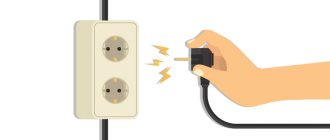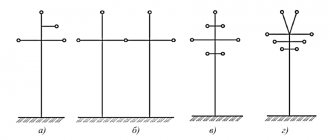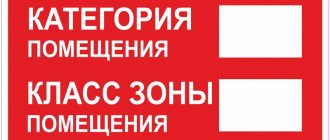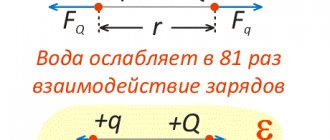Analytics Publications
From August 4, 2022, the Land Code of the Russian Federation (hereinafter referred to as the Land Code of the Russian Federation) was supplemented by Chapter XIX, which establishes a unified legal regulation of zones with special conditions for the use of territories (hereinafter referred to as ZOUIT) and introduces a number of novelties into the previously existing rules for establishing, changing, terminating ZOUIT and use land plots within their borders, and changes were also made to a number of other acts of federal legislation relating to ZOUIT.
In this article we will dwell on some of the problems associated with the ZOUIT regime and arising due to imperfect legal regulation, as well as on legislative innovations, including those aimed at solving these problems.
1.
Some problems of legal regulation of ZOUIT
The concept of ZOUIT is enshrined in the Town Planning Code of the Russian Federation[1] and is actually a listing of the types of these zones: security, sanitary protection, zones for the protection of cultural heritage sites, etc. At the same time, the characteristics that determine the classification of a particular zone as a ZOUIT are not identified by law, and until recently, a closed list of types of ZOUIT was not established. At the same time, the legislation itself regulating certain types of ZOOIT is currently extremely fragmented. The rules regarding individual ZOUIT are enshrined in acts of varying legal force: for example, in relation to electric power facilities, the rules are established by the Decree of the Government of the Russian Federation[2], heating networks - by the Order of the Ministry of Construction of the Russian Federation[3], in relation to sanitary protection zones, until recently only SanPiN 2.2 was in force .1/2.1.1.1200-03, approved by the resolution of the Chief State Sanitary Doctor of the Russian Federation[4]. In addition, there is no uniformity in the content of these acts.
The existing legal uncertainty led to the fact that the list of ZOUIT remained extremely vague. At the same time, at the level of legal acts of the constituent entities of the Russian Federation, there were even cases of introducing additional types of ZOUIT, which, in principle, were not provided for by federal legislation.
Thus, in the city of St. Petersburg, when granting land plots from state ownership to private ownership or lease, it was practiced to establish a certain ZOUIT “right of passage and passage.” At the same time, there is no special regulation of the regime of this zone, detailing the procedure for its establishment, changes, or a specific list of activities prohibited within its borders. In terms of the content of restrictions on the use of the territory, this zone is similar to a public easement established to ensure public access to a certain object, for example, a water body. At the same time, the procedure according to which a public easement is established is not observed when creating a “right of way and right of way” zone.
It should be noted that in judicial practice there has been a strong position on the illegality of decisions of state bodies of St. Petersburg to establish “right of passage” zones as not provided for by federal legislation [5], and therefore the existence of these zones was successfully terminated in court. [6] In addition, the legal status of certain types of other territories, the existence of which was directly provided for by federal legislation, remained unsettled, for example, zones of minimum (normative) distances.
Minimum distances represent setbacks from objects subject to protection and are established, for example, in relation to gas pipelines, oil pipelines and petroleum product pipelines. Before amendments were made to the Land Code of the Russian Federation, there were no regulations directly relating minimum distances to ZOUIT.
At the same time, the use of land plots within the boundaries of minimum distance zones is significantly limited. So, by virtue of Art. 28, part 4 art. 32 of the Law on Gas Supply[7] construction within the minimum distances from gas supply system facilities is prohibited; objects built closer than the minimum distances are subject to demolition at the expense of legal entities and individuals who committed violations. In practice, the courts satisfy the claims of organizations that own gas supply facilities for the demolition of facilities located within minimum distances, as well as for invalidating construction permits issued without taking such distances into account[8]. At the same time, the courts do not take into account the fact that the violator is unaware of the establishment of minimum distances, as well as the fact that there is no information about this zone in public sources (for example, the Unified State Register of Real Estate (hereinafter referred to as the EGRN)).
It should be noted that the federal law that amended the RF Land Code in terms of regulating ZOOIT[9], the norm on the demolition of objects within minimum distances is canceled from January 1, 2022, and during the transition period the demolition of objects built within minimum distances is prohibited in certain cases, for example, if for the construction of an object the approval of the organization-rights holder of the corresponding engineering network was obtained. The issue of availability of information about installed ZOUIT has also been a pressing issue for a long time.
The Law on State Registration of Real Estate, even before the latest amendments, provided for the entry into the Unified State Register of Information about ZOUIT, in particular, about their boundaries, documents justifying the establishment of ZOUIT, and the content of the imposed restrictions[10]. At the same time, practice shows that the level of completion of these sections of the Unified State Register remains extremely low. At the same time, in judicial practice, a position has been formed that the restrictions arising from the establishment of ZOUIT apply to the land plot, regardless of the inclusion of information about them in the Unified State Register of Real Estate[11]. It is obvious that economic activity on a land plot in such conditions is associated with significant risks. We have described only some of the problems that arise in practice. It seems that the novelties introduced into the RF Land Code and other legislative acts from August 4, 2022 are aimed at resolving these problems.
2. Establishment, change, termination of ZOUIT: regulatory innovations
The first change that you need to pay attention to is the establishment of a closed list of types of ZOUIT (Article 105 of the Land Code of the Russian Federation), as well as an exhaustive list of purposes for which ZOUIT can be established (clause 1 of Article 104 of the Land Code of the Russian Federation). The consolidation of a unified and closed list of types of land plots, of course, must be assessed as a positive change aimed at protecting the interests of land owners and ensuring legal certainty. With regard to the content of the list itself, we note that ZOUIT now directly includes, in particular, the above-mentioned zones of minimum distances, as well as roadside lanes of highways, which were also not previously defined in legislation as ZOUIT. The law specifies the protection of the life and health of citizens, the safe operation of transport, communications, energy facilities, national defense and state security facilities, and environmental protection as the goals of establishing ZOOIT.
To solve the problem of heterogeneity in the legal regulation of specific ZOUIT, a separate article was introduced in the Land Code of the Russian Federation, dedicated to the procedure for establishing, changing and terminating the existence of ZOUIT. According to the new requirements, the regulation in relation to each type of ZUIT (with the exception of ZUIT arising by force of law, for example, coastal protective strips) is approved by the Government of the Russian Federation, and clause 1 of Art. 106 of the RF Land Code determines the content of such provisions. The regulation should, among other things, establish the procedure for making decisions on the creation of a ZOUIT, the grounds and procedure for changing and terminating the existence of a ZOUIT, an exhaustive list of objects in connection with the placement or for the purpose of protecting which a ZOUIT is established, the period for establishing a ZOUIT (except for cases where a ZOUIT is established for an indefinite period ), requirements for the maximum size of zones, designation of the boundaries of the ZOUIT, as well as a list of restrictions on the use of land plots that can be established within the boundaries of the ZOUIT. At the same time, when determining restrictions on use, an exhaustive list of types of objects and (or) requirements for the parameters of objects, the placement of which is allowed or prohibited within the boundaries of the zone, must be established, as well as a closed list of types of activities, the implementation of which is allowed and (or) prohibited within the boundaries of the zone.
A novelty is the rule prohibiting the requirement for approval of the placement of buildings, structures, and conduct of activities within the boundaries of the ZOUIT (with the exception of approval of the placement of objects within the boundaries of roadside strips of highways). In turn, at the moment, a significant number of previously approved rules in relation to various ZOUIT establish types of activities, the implementation of which is allowed with the approval of the operating organization. For example, according to clause 10 of the Rules for establishing security zones of electric grid facilities, with the consent of the network organization, in security zones, in particular, excavation, mining, blasting, and construction of buildings and structures are permitted. Although these Rules establish general principles for issuing appropriate approval, at the same time, granting such broad discretion to network organizations can create grounds for abuse.
The procedures for establishing, changing, and terminating the existence of ZOUIT, carried out on the basis of a decision of an authorized government body or local government body, have also been unified (except for cases of establishing ZOUIT by force of law). At the same time, the law also provides detailed requirements for the content of such decisions. Previously approved norms practically did not regulate the procedure for making decisions on establishing or changing ZOUIT. Thus, legal acts regulating the regime of protective zones of heating networks[12], in principle, do not relate to the issues of establishing this ZOUIT, and do not indicate the need to adopt any acts of authorized bodies for its creation. This gap in the legislation in practice gave rise to a number of problems, in particular related to the entry of information about the boundaries of ZOUIT in the Unified State Register, since the basis for entering this information is precisely the corresponding decision (act) of the authorized body, sent to Rosreestr in the manner of interdepartmental interaction.
According to the new uniform rule enshrined in paragraph 10 of Art. 106 of the Land Code of the Russian Federation, a mandatory appendix to the decision to establish a ZOUIT is information about the boundaries of this zone with a graphic description of the location and a list of characteristic border points in the coordinate system adopted for maintaining the Unified State Register of Real Estate. On the ground, ZOUIT are subject to marking with special signs. Moreover, the RF Land Code introduces a new provision that can be called almost revolutionary: ZOUIT, including those arising by force of law, are considered established, amended or terminated from the moment the relevant information is entered into the Unified State Register of Real Estate. At the same time, Rosreestr is obliged to notify the rights holders of real estate located within the boundaries of these zones about the entry into the Unified State Register and changes in information about ZOUIT. This legislatively enshrined rule, which was previously included in some legal acts regulating individual ZOUIT, but in practice was ignored, including by the courts when resolving disputes, in our opinion, will ensure the transparency of the system for establishing ZOUIT and the public availability of information about them. The above, in turn, minimizes the risks for owners of land plots planning their economic development, finally identifying a complete list of existing restrictions on the use of plots from the “gray zone”.
An important innovation also affected the establishment of ZOUIT during the design and construction of facilities. Thus, the developer of the facility, in connection with the placement of which a ZOUIT is established, before the day of applying for a construction permit, is obliged to apply to the authorized body with an application to establish or change the corresponding ZOUIT. The decision taken to establish a ZOUIT in relation to the facility planned for construction is sent by the body that adopted it to the body that issues the construction permit. If the facility is never built, the existence of ZOUIT will be terminated. Let us note that for the transition period, the law provides for special rules in relation to existing ZOUIT. In particular, before January 1, 2022, without entering information into the Unified State Register, ZOUIT are considered established if they were established before August 4, 2022 on the basis of: a decision of the authorized body on the establishment of ZOUIT or on the approval of its boundaries, adopted in accordance with the legislation in force on the day making this decision; a legal act entailing the emergence of a ZOUIT without the adoption of a special decision by an authority; court decisions. In the event that previously it was required to approve the location of the boundaries of the ZOUIT in text and (or) graphic form or the boundaries had to be marked on the ground, the zone is considered established only if this requirement is met.
At the same time, after the Government of the Russian Federation adopts new regulations on ZOUIT, containing norms on the size of ZOUIT and related restrictions that differ from the previously valid rules, the established ZOUIT must be brought into compliance with the new rules before January 1, 2022. Before this date, all necessary information about previously established ZOUIT must also be entered into the Unified State Register. In addition, by January 1, 2022, the boundaries of all ZOUITs arising by force of law must also be established.
Having dwelled on the main aspects of establishing and changing ZOUIT, let us turn to the question of the consequences of creating these zones.
3. Consequences of establishing ZOUIT according to the new rules
From the moment the ZOUIT is established, land plots located within the boundaries of such a zone are subject to all restrictions provided for by the decision to establish the ZOUIT. To bring previously constructed objects into compliance with the restrictions of the ZOUIT, their reconstruction is carried out within three years from the date of establishment of such a zone, and if such bringing into compliance is impossible, the object is subject to demolition.
The most interesting consequence of the establishment of ZOOIT, regulated by a set of new rules, is the legal relationship regarding compensation for losses in connection with the restrictions imposed. Before the amendments were made to the Land Code of the Russian Federation, only general Article 57 of the Land Code of the Russian Federation was in force, dedicated to compensation for losses, including those caused by restricting the rights of owners of land plots, somewhat specified by Decree of the Government of the Russian Federation of May 7, 2003 No. 262 on approval of the Procedure for compensation of such losses. At the same time, in practice, the demands of land plot owners for compensation for losses caused by the establishment of a ZOOIT were not satisfied in most cases, since the courts considered the grounds for collecting damages to be unidentified (the fact of the existence and amount of losses, the culpability of the actions of the person in whose interests the ZOOIT was established, as well as causality). investigative connection between the actions of a given person and the occurrence of losses)[13].
From August 4, 2022, a new Article 57.1 was introduced into the RF Land Code, establishing the specifics of compensation for losses caused by the establishment of ZOUIT, and Article 57 of the RF Land Code was also amended. The amendments introduced, firstly, expanded the list of persons who are compensated for losses. Now they include not only persons who have rights to land plots, but also owners of rights to buildings, structures, premises in them, as well as tenants of housing under social tenancy agreements.
Secondly, the persons at whose expense the losses are compensated are directly identified. Such persons are: the owner or other legal holder of the object, in connection with the placement of which a ZOUIT has been established; in the absence of these persons, as well as when establishing ZOOIT by virtue of the law and zones for the protection of cultural heritage sites - the authorized bodies that made the decision to establish ZOOIT. At the same time, the law directly lays down the principle that when calculating the amount of damages, not only the value of the object itself, the rights to which are limited, is taken into account, but also the amount of obligations to third parties that will not be fulfilled due to the restrictions imposed. Compensation for losses, as well as the demolition of objects or their reconstruction, are carried out on the basis of an agreement on compensation for losses or on the basis of a court decision. A claim for compensation for losses may be sent by interested parties within a period of no more than five years from the date of establishment or change of the ZOUIT or from the day when these persons learned of such establishment or change.
As an alternative to compensation for losses, the law also gives owners of land plots and real estate located on them the right to demand the redemption of their real estate if the establishment of a zone of land use makes it impossible to use them. In addition, persons whose rights to land plots in public ownership have been terminated (tenants, land users and landowners) have the right to demand compensation.
Detailing the procedure for paying compensation in connection with the establishment of a ZOUIT is, of course, aimed at maintaining a balance of interests of the organizations that own the objects for the protection of which the ZOUIT is established, public interests and the interests of the rights holders of objects falling within the boundaries of these zones. Practice will show how successfully this mechanism will work. Summing up the overall analysis, we note that the changes made to the legal regulation of ZOUIT are generally aimed at ensuring transparency of the procedure for establishing these zones, protecting the rights of both persons in whose interests ZOUIT are established, and persons whose rights are violated in connection with such establishment.
Considering the significance of the restrictions imposed by ZOUIT, and at the same time the importance of complying with them to protect the life and health of citizens, ensure industrial safety, and protect other socially important values, ensuring a balance of interests of all participants is extremely important and difficult. At the same time, it seems that at the moment the legislation is not on the right path of development.
[1] Clause 4 of Article 1 of the Town Planning Code of the Russian Federation (hereinafter referred to as the RF Civil Code).
[2] Decree of the Government of the Russian Federation dated February 24, 2009 No. 160 “On the procedure for establishing security zones of electric grid facilities and special conditions for the use of land plots located within the boundaries of such zones.”
[3] Order of the Ministry of Construction of the Russian Federation dated August 17, 1992 No. 197 “On standard rules for the protection of communal heating networks.”
[4] Resolution of the Chief State Sanitary Doctor of the Russian Federation dated September 25, 2007 No. 74 “On the introduction into force of a new edition of sanitary and epidemiological rules and regulations SanPiN 2.2.1/2.1.1.1200-03 “Sanitary protection zones and sanitary classification of enterprises, structures and other objects."
[5] According to paragraph 1 of Art. 56 of the Land Code of the Russian Federation, rights to land may be limited on the grounds established by the Land Code of the Russian Federation and federal laws.
[6] See, for example, the decisions of the Arbitration Court of the North-Western District dated December 9, 2015 in case No. A56-70228/2014, FAS North-Western District dated October 16, 2012 in case No. A56-53887/2011, Thirteenth Arbitration Court of Appeal dated July 22, 2011 in case No. A56-71964/2010.
[7] Federal Law of March 31, 1999 No. 69-FZ “On Gas Supply in the Russian Federation.”
[8] For example, paragraph 1 of section I of the Review of judicial practice of the Supreme Court of the Russian Federation No. 2 (2016), the ruling of the Supreme Court of the Russian Federation dated September 27, 2016 in case No. A71-15106/2014, the Resolution of the Arbitration Court of the Volga District dated October 9, 2017 in case No. A12-2336/2017.
[9] Federal Law of August 3, 2018 No. 342-FZ “On Amendments to the Town Planning Code of the Russian Federation and Certain Legislative Acts of the Russian Federation.”
[10] Part 1 of Article 10 of the Federal Law of July 13, 2015 No. 218-FZ “On State Registration of Real Estate”.
[11] Resolution of the Court of Justice of the West Siberian District dated September 25, 2015 in case No. A03-22308/2014.
[12] The main legal act is the Standard Rules for the Protection of Communal Heating Networks, approved. Order of the Ministry of Construction of the Russian Federation dated August 17, 1992 No. 197.
[13] For example, the resolution of the Federal Antimonopoly Service of the Far Eastern District dated 04/07/2014 in case No. A59-4856/2012.
Water pipeline security zone
The security zone of the water supply system is 5 meters from the foundation of the facility to the network. The security zone from the foundation of the fence of enterprises, overpasses, contact and communication supports, railways to the water supply system is 3 meters.
In addition, from SP 42.133330.2011 Table 16 (see below for more details), you can glean the following information regarding the laying of water supply and sewer pipes:
"2. The distances from the domestic sewerage system to the drinking water supply should be taken, m: to the water supply system made of reinforced concrete and asbestos pipes - 5; to the water supply from cast iron pipes with a diameter of up to 200 mm - 1.5, with a diameter of over 200 mm - 3; to the water supply system made of plastic pipes - 1.5.
The distance between the sewerage networks and industrial water supply, depending on the material and diameter of the pipes, as well as the nomenclature and characteristics of the soil, should be 1.5 m.”
Minimum distances of gas pipelines.
Gas pipelines are distinguished by design (overground, underground), pressure inside the pipe (from several kilopascals to 1.5 megapascals) and pipe diameter. The distance from the gas pipeline to the building is determined in SP 62.13330.2011 in Appendix B. Here are excerpts from this application for underground and aboveground gas pipelines.











